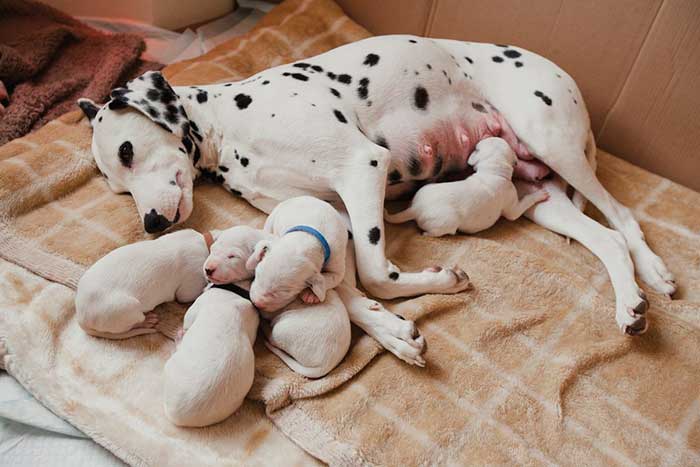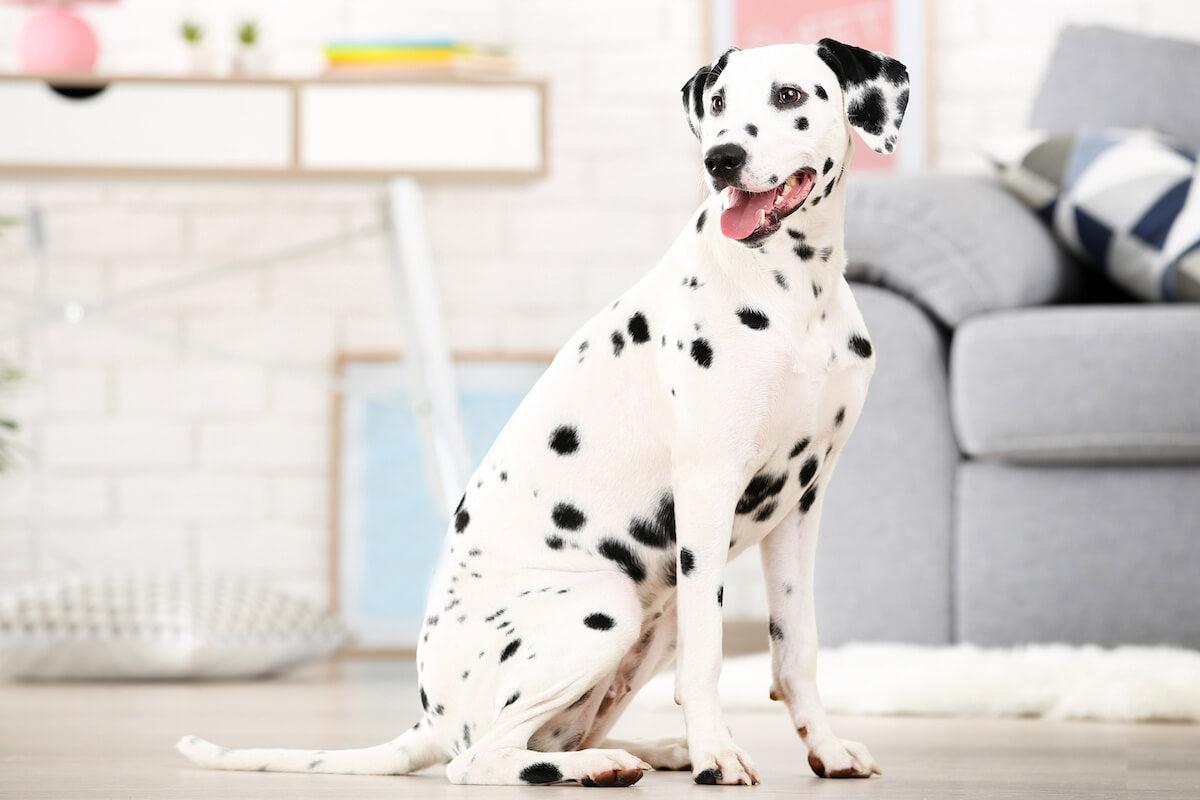Have you ever wondered if Dalmatians lose their spots as they grow older? Well, here’s a fascinating fact: Dalmatians are actually born without any spots! That’s right, those iconic spots only start to appear as they get older. So, the next time you see a young Dalmatian puppy without spots, don’t worry, it’s just a matter of time before their spots make their grand entrance!
Dalmatians have a unique coat pattern that sets them apart from other dog breeds. The origin of their spots dates back centuries, as they were bred to be carriage dogs alongside fire-fighters in the 18th century. Interestingly, Dalmatians continue to develop spots throughout their lives, but they do not lose them as they age. Despite the misconception that Dalmatians lose their spots, these distinctive markings remain a part of their identity from birth to adulthood. So, the answer is clear: Dalmatians don’t lose their spots – instead, they gain them as they grow!

Do Dalmatians Lose Their Spots?
Dalmatians are known for their unique and striking coat pattern of black or liver spots on a white background. But have you ever wondered if Dalmatians lose their spots as they grow older? In this article, we will explore the fascinating world of Dalmatian spots and find out the truth behind this intriguing question.
1. The Development of Dalmatian Spots
The distinctive spots on Dalmatians are not visible at birth. When Dalmatian puppies are born, they have pure white fur with no spots. As they grow, the spots gradually start to appear. The process of developing spots is called “ticking.”
Ticking occurs as the Dalmatian’s pigmentation develops. Each individual hair follicle produces a dark pigment called melanin. The amount and pattern of melanin produced determine the formation of spots. It usually takes a few weeks to several months for the spots to fully develop and cover the dog’s entire body.
Once the spots have developed, they are usually permanent and will not disappear naturally as the dog ages. However, there are a few factors that can cause changes in the appearance of Dalmatian spots over time.
2. Factors that Affect the Appearance of Dalmatian Spots
While Dalmatians don’t typically lose their spots, there are certain factors that can cause variations in the appearance of their coat pattern as they age. One factor is known as “spot fading.”
Spot fading refers to the gradual lightening or loss of color in the spots. This can occur due to various reasons such as sun exposure, aging, hormonal changes, or certain medical conditions. The severity of spot fading can vary from dog to dog, and some Dalmatians may retain their spots more vibrantly than others.
Additionally, as Dalmatians age, their coat may undergo changes in texture and thickness. These changes can affect the overall appearance of the spots, making them appear more or less pronounced. Regular grooming, proper nutrition, and general care can help maintain the health and vitality of a Dalmatian’s coat.
3. Caring for Dalmatian Spots
While you can’t control whether or not a Dalmatian will lose its spots, you can take steps to ensure their spots remain vibrant and healthy. Here are some tips for caring for Dalmatian spots:
- Protect from excessive sun exposure: Just like humans, Dalmatians can experience sunburn. Protect their skin and spots from the sun by limiting their exposure during peak hours and applying pet-safe sunscreen when necessary.
- Regular grooming: Brushing your Dalmatian’s coat regularly helps distribute natural oils and maintain the health of their fur and spots.
- Provide a balanced diet: Good nutrition is essential for a Dalmatian’s overall health, including the condition of their coat. Ensure they receive a high-quality diet recommended by their veterinarian.
- Monitor for any changes: Keep an eye on your Dalmatian’s spots for any unusual changes, such as significant spot fading, irritation, or hair loss. If you notice anything concerning, consult with a veterinarian for proper evaluation and guidance.
4. Dalmatians: A Breed of Eternally Spotted Beauty
In conclusion, while Dalmatians don’t typically lose their spots, variations in the appearance of their coat pattern can occur as they age. Spot fading, changes in coat texture, and thickness may affect the overall look of their spots over time. Taking proper care of a Dalmatian’s spots through sun protection, regular grooming, a balanced diet, and attentive observation can help maintain the beauty and health of their unique coat pattern.
So, if you’re lucky enough to share your home with a Dalmatian, embrace their spotted beauty and appreciate the unique markings that make this breed so special.
Why Do Dalmatians Have Spots?
Do you ever wonder why Dalmatians have spots? In this section, we will dive into the fascinating history and genetics behind this iconic breed’s unique coat pattern.
Dalmatian: A Breed Steeped in History
The Dalmatian is a breed with a rich history that dates back to ancient times. While the exact origin of their distinctive spots remains a mystery, Dalmatians have been depicted in works of art and literature as early as the 17th century. They were often depicted alongside horse-drawn carriages, serving as carriage dogs or firehouse mascots.
One theory suggests that Dalmatians were bred to develop spots as a form of camouflage against their prey. This theory suggests that their spots mimicked the appearance of rocks, making them less visible to potential predators as the breed was used for hunting and guarding livestock.
The Genetics of Dalmatian Spots
The genetic basis of Dalmatian spots is fascinating and unique. Unlike many dog breeds, Dalmatians are not born with their spots. So, how do they develop their distinctive coat pattern?
The spots of a Dalmatian are caused by a specific gene known as the “ticking gene.” This gene is responsible for the distribution and formation of the spots. It acts as a switch that turns on the production of pigment in individual hair follicles.
Interestingly, the ticking gene is a dominant gene, which means that if a Dalmatian carries the gene, their offspring will also have spots. However, the intensity and distribution of the spots can vary from dog to dog, resulting in the unique patterns seen in Dalmatians. The ticking gene also influences the color of the spots, which can range from black to liver.
Spotting the Beauty in Dalmatians
The spots of Dalmatians are not only visually striking but also play a significant role in defining their identity as a breed. Their unique coat pattern sets them apart from other dogs and adds to their allure and charm.
So the next time you see a Dalmatian with its distinctive spots, take a moment to appreciate the beauty and history behind this iconic breed. Their spots are not just a random pattern; they are a testament to their genetics, purpose, and the marvelous world of diversity in the animal kingdom.
Key Takeaways: Do Dalmatians Lose Their Spots?
1. Dalmatians are born with spots, but they may fade over time.
2. The spots can become less prominent as the dog gets older.
3. Dalmatians usually keep their spots, but they may lighten or darken.
4. Factors like sun exposure and genetics can affect the spots’ appearance.
5. Regular grooming, healthy diet, and proper care can help maintain the spots.
Frequently Asked Questions
Dalmatians are known for their distinctive spots, but have you ever wondered if these spots can disappear over time? Here are some common questions about whether Dalmatians lose their spots.
Why do Dalmatians have spots?
Dalmatians are born completely white and their spots gradually appear within the first few weeks of their lives. Each Dalmatian has a unique pattern of spots, just like human fingerprints. The spots are formed due to the interaction of their genes and are a defining characteristic of the breed.
As Dalmatians grow older, their spots usually become more defined and prominent. However, individual spots may change in size and shape as the dog matures, especially during the first year of their life. So, while the spots don’t disappear completely, they may undergo some changes.
Do Dalmatians lose their spots as they age?
No, Dalmatians do not typically lose their spots as they age. Once the spots have appeared, they tend to remain throughout the dog’s lifetime. However, it is important to note that the color of the spots may fade or change over time. The colors can become lighter or darker, and some spots may even merge together, giving the appearance of fewer spots.
It’s also important to remember that the spots can vary in size, shape, and intensity, which can influence how visible they are. Each Dalmatian is unique, and their spots can have some individual variation just like their personalities.
Can a Dalmatian’s spots disappear due to health issues or injuries?
In some cases, health issues or injuries can affect the appearance of a Dalmatian’s spots. For example, if a Dalmatian develops a skin condition or undergoes trauma to their skin, such as burns or injuries, it can lead to temporary hair loss. This can cause spots to become less visible, but they usually return as the dog’s coat grows back.
However, if a Dalmatian experiences significant scarring or damage to their skin, it may result in permanent hair loss and ultimately, the loss of spots in those affected areas. It’s essential to take good care of their skin and address any health issues promptly to maintain the integrity of their spots.
Do all Dalmatians have the same number of spots?
No, all Dalmatians do not have the same number of spots. The number and pattern of spots can vary among Dalmatians and are influenced by genetics. Some Dalmatians have dense spots covering their entire body, while others may have fewer spots that are smaller and more scattered.
It’s worth noting that Dalmatians are typically born with fewer spots, which increase in number and size as they grow. So, a young Dalmatian might initially have fewer spots, but as they mature, they develop the classic spotted coat that the breed is known for.
Can Dalmatians lose their spots due to certain medications or treatments?
While it is uncommon, some medications or treatments can potentially cause changes in a Dalmatian’s coat. Certain medications, such as corticosteroids, can cause the hair to grow back differently, which might affect the appearance of spots. Additionally, some chemotherapy treatments can cause hair loss, temporarily altering the appearance of a Dalmatian’s coat.
However, it’s important to remember that such cases are rare and isolated. Most Dalmatians maintain the integrity of their spots throughout their lives, regardless of any medications or treatments they may undergo.

Why do Dalmatians have spots ?
Summary
Dalmatians do not actually lose their spots as they grow older. Those spots are part of their genetics and stay with them throughout their lives. However, as they age, their spots may fade or become less prominent.
Some people may mistake the fading spots for them disappearing, but they are simply less noticeable. So, if you have a Dalmatian, don’t worry, their unique spots are here to stay!
